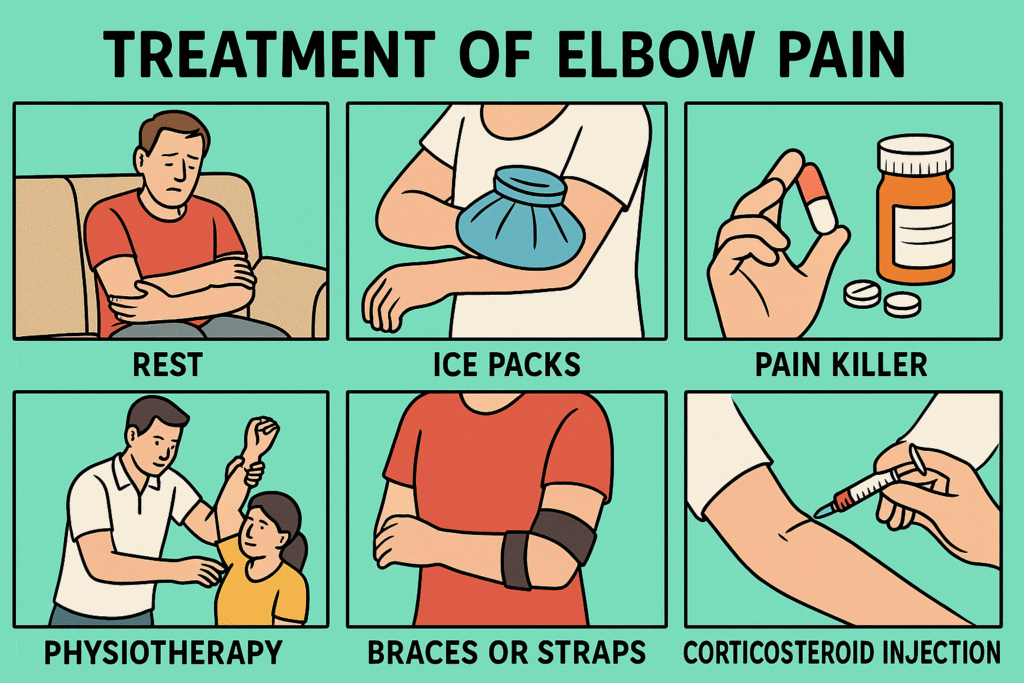Ever had trouble straightening your arm or felt a sharp twinge when lifting a bag? Elbow pain can sneak up in everyday situations—from typing to playing tennis—and it’s surprisingly common. Let’s dive into what might be causing that nagging ache and what you can do about it.
What is Elbow Pain?
Elbow pain is any discomfort or soreness felt in or around the elbow joint, which connects the upper arm (humerus) to the forearm (radius and ulna). While the pain can be mild and short-lived, for some, it becomes a chronic nuisance that limits daily activities like lifting, pushing, or even resting the arm.
In fact, elbow pain affects millions worldwide, especially people who engage in repetitive arm movements—think athletes, manual workers, and desk jobbers alike.
How Does Elbow Pain Happen?
To understand elbow pain, picture the elbow as a hinge that lets your arm move like a door. But unlike a door hinge, it’s surrounded by muscles, tendons, nerves, and ligaments working in sync. When any of these parts become inflamed, overused, compressed, or injured—pain sets in.
Imagine constantly opening and closing a rusty door. Over time, that hinge wears out. Similarly, overuse or poor movement patterns can “wear down” parts of the elbow.
What Causes Elbow Pain?
Many things can cause elbow pain. Here’s a quick breakdown of the most common culprits:
- Tennis Elbow (Lateral Epicondylitis)
Caused by overuse of the forearm muscles, especially during gripping or wrist movements. Despite the name, you don’t need to play tennis to get it.
🟡 Up to 3% of the population experiences this yearly, mostly in ages 30–50. - Golfer’s Elbow (Medial Epicondylitis)
Similar to tennis elbow but affects the inner side of the elbow. Common in golfers, but also in people doing repetitive wrist flexing. - Elbow Bursitis (Olecranon Bursitis)
Inflammation of the fluid-filled sac (bursa) at the back of the elbow. Can result from trauma, infection, or long periods of leaning on the elbow. - Cubital Tunnel Syndrome
Involves pressure on the ulnar nerve (the “funny bone” nerve), leading to numbness and tingling in the ring and little fingers. - Sprains and Strains
These are soft tissue injuries often due to sports, heavy lifting, or accidents. - Arthritis
Rheumatoid arthritis or osteoarthritis can cause joint degeneration, stiffness, and swelling in the elbow.
Who’s Most at Risk?
Elbow pain can affect anyone, but some people are more likely to experience it due to their habits, age, or occupation.
At-risk groups include:
- People aged 30–60, when joint and tendon wear-and-tear begins
- Athletes—especially tennis players, golfers, pitchers, and climbers
- Repetitive motion workers—like mechanics, plumbers, typists, and factory workers
- People with arthritis or diabetes
- Those with poor posture or poor lifting techniques
Other Symptoms to Watch For
Elbow pain doesn’t always act alone. It might bring some friends along—like:
- Stiffness or limited motion
Struggling to bend or straighten your elbow? - Swelling or warmth
Could indicate inflammation or infection. - Tingling or numbness
Often a sign of nerve involvement (like in cubital tunnel syndrome). - Weak grip strength
Common in tendon injuries like tennis elbow.
In more serious or chronic cases, pain may radiate up the arm or down into the wrist and fingers, making daily tasks a real chore.
How Is Elbow Pain Diagnosed?
Your doctor will start with a thorough history and physical exam. They’ll ask when the pain started, what worsens it, and check your range of motion.
The gold standard test depends on the suspected cause:
- X-rays help rule out fractures or arthritis
- MRI or ultrasound can show soft tissue injuries (tendons, ligaments, nerves)
- Nerve conduction studies are used when nerve entrapment is suspected
These tests help tailor the treatment plan to your exact condition.
How Is Elbow Pain Treated?
The good news? Most cases of elbow pain improve with rest and non-invasive care. Here’s what’s commonly done:
First-Line Treatment (Mainstream/Gold Standard):
- Rest – Avoid activities that worsen the pain.
- Ice packs – Reduce swelling and inflammation.
- NSAIDs (e.g., ibuprofen) – Relieve pain and swelling.
- Physiotherapy – Strengthening and stretching exercises to restore function.
- Braces or straps – Especially useful for tennis or golfer’s elbow to offload pressure.
Other Treatment Options:
- Corticosteroid injections – Reduce inflammation in persistent cases.
- Shockwave therapy – May help in chronic tendinopathies.
- Platelet-Rich Plasma (PRP) – For difficult cases, especially athletes.
- Surgery – Rarely needed, but may be necessary if there’s structural damage or nerve compression that doesn’t respond to other treatments.

When Should You See a Doctor?
If the pain:
- Lasts more than a few weeks
- Interferes with daily life
- Comes with tingling, weakness, or fever
—then it’s time to get a professional opinion.
Final Thoughts
Elbow pain might seem minor, but it can be a big disruptor—especially when it limits your grip, movement, or sleep. Most causes are treatable, especially when caught early. So don’t brush it off. A few simple changes today can mean pain-free movement tomorrow.
References
- “Elbow Pain: Causes, Diagnosis, and Treatment” — Mayo Clinic, 2024. https://www.mayoclinic.org/symptoms/elbow-pain
- “Tennis Elbow and Golfer’s Elbow” — American Academy of Orthopaedic Surgeons (AAOS), 2023. https://orthoinfo.aaos.org/en/diseases–conditions/tennis-elbow/
- “Cubital Tunnel Syndrome” — Cleveland Clinic, 2023. https://my.clevelandclinic.org/health/diseases/12966-cubital-tunnel-syndrome
